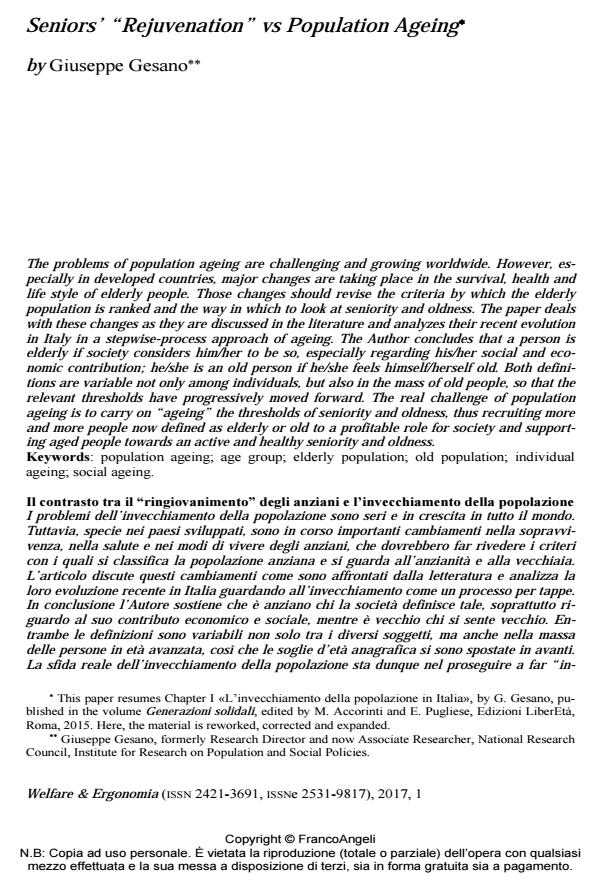Seniors’ "Rejuvenation" vs Population Ageing
Journal title WELFARE E ERGONOMIA
Author/s Giuseppe Gesano
Publishing Year 2018 Issue 2017/1
Language English Pages 16 P. 47-62 File size 240 KB
DOI 10.3280/WE2017-001003
DOI is like a bar code for intellectual property: to have more infomation
click here
Below, you can see the article first page
If you want to buy this article in PDF format, you can do it, following the instructions to buy download credits

FrancoAngeli is member of Publishers International Linking Association, Inc (PILA), a not-for-profit association which run the CrossRef service enabling links to and from online scholarly content.
The problems of population ageing are challenging and growing worldwide. However, es-pecially in developed countries, major changes are taking place in the survival, health and life style of elderly people. Those changes should revise the criteria by which the elderly population is ranked and the way in which to look at seniority and oldness. The paper deals with these changes as they are discussed in the literature and analyzes their recent evolution in Italy in a stepwise-process approach of ageing. The Author concludes that a person is elderly if society considers him/her to be so, especially regarding his/her social and economic contribution; he/she is an old person if he/she feels himself/herself old. Both definitions are variable not only among individuals, but also in the mass of old people, so that the relevant thresholds have progressively moved forward. The real challenge of population ageing is to carry on "ageing" the thresholds of seniority and oldness, thus recruiting more and more people now defined as elderly or old to a profitable role for society and supporting aged people towards an active and healthy seniority and oldness.
Keywords: Population ageing; age group; elderly population; old population; individual ageing; social ageing.
Giuseppe Gesano, Seniors’ "Rejuvenation" vs Population Ageing in "WELFARE E ERGONOMIA" 1/2017, pp 47-62, DOI: 10.3280/WE2017-001003